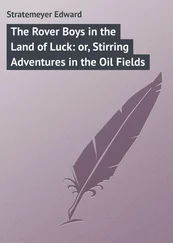Stephen Fry - The Ode Less Travelled - Unlocking The Poet Within
Здесь есть возможность читать онлайн «Stephen Fry - The Ode Less Travelled - Unlocking The Poet Within» весь текст электронной книги совершенно бесплатно (целиком полную версию без сокращений). В некоторых случаях можно слушать аудио, скачать через торрент в формате fb2 и присутствует краткое содержание. Жанр: Старинная литература, на английском языке. Описание произведения, (предисловие) а так же отзывы посетителей доступны на портале библиотеки ЛибКат.
- Название:The Ode Less Travelled: Unlocking The Poet Within
- Автор:
- Жанр:
- Год:неизвестен
- ISBN:нет данных
- Рейтинг книги:3 / 5. Голосов: 1
-
Избранное:Добавить в избранное
- Отзывы:
-
Ваша оценка:
- 60
- 1
- 2
- 3
- 4
- 5
The Ode Less Travelled: Unlocking The Poet Within: краткое содержание, описание и аннотация
Предлагаем к чтению аннотацию, описание, краткое содержание или предисловие (зависит от того, что написал сам автор книги «The Ode Less Travelled: Unlocking The Poet Within»). Если вы не нашли необходимую информацию о книге — напишите в комментариях, мы постараемся отыскать её.
The Ode Less Travelled: Unlocking The Poet Within — читать онлайн бесплатно полную книгу (весь текст) целиком
Ниже представлен текст книги, разбитый по страницам. Система сохранения места последней прочитанной страницы, позволяет с удобством читать онлайн бесплатно книгу «The Ode Less Travelled: Unlocking The Poet Within», без необходимости каждый раз заново искать на чём Вы остановились. Поставьте закладку, и сможете в любой момент перейти на страницу, на которой закончили чтение.
Интервал:
Закладка:
There are three main genres of classical ode which do have more formal natures or specific functions however–the Sapphic, Pindaric and Horatian, named after the Greeks Sappho and Pindar, and the Latin poet Horace. Of these, the most formally fixed and the most popular today by a dodecametric mile is the SAPPHIC:
SAPPHICLet’s hear it for the S APPHIC O DEAn oyster bed of gleaming pearlsA finely wrought poetic mode
Not just for girls.Lesbian Sappho made this formWith neat Adonic final lineHer sex life wasn’t quite the norm
And nor is mine.Three opening lines of just four feetCreate a style I rather like:It’s closely cropped and strong yet sweet–
In fact, pure dike.
Actually, the above displays the lineaments of the English stress-based imitation as adapted from the classical original, which was made up of four eleven-syllable lines in this metre:

The symbol  stands for an anceps , a metrical unit (or semeion ) which in classical verse can be long or short, but for our purposes means can be either stressed or unstressed, according to the poet’s wishes. An anceps offers a free choice of trochee or spondee in other words. So, doggerel that makes a classical Sapphic Ode might go:Noble S APPHOfashioned her odes of high-flownVerse in four lines, marked by their classic profile.Though she’s now best remembered for her full-blown
stands for an anceps , a metrical unit (or semeion ) which in classical verse can be long or short, but for our purposes means can be either stressed or unstressed, according to the poet’s wishes. An anceps offers a free choice of trochee or spondee in other words. So, doggerel that makes a classical Sapphic Ode might go:Noble S APPHOfashioned her odes of high-flownVerse in four lines, marked by their classic profile.Though she’s now best remembered for her full-blown
Lesbian lifestyle.
Not that Ancient Greek Sapphics would be rhymed, of course. English verse in this semi-quantitative classical manner does exist, although practitioners (out of Poe-like disbelief in the spondee) usually render the first three lines as trochee-trochee dactyl trochee-trochee. Ezra Pound managed a superb true spondaic line-end in his Sapphic Ode, ‘Apparuit’:Green the ways, the breath of the fields is thine there
Dear Algie Swinburne wrote Sapphics too:All the night sleep came not upon my eyelids,Shed not dew, nor shook nor unclosed a feather,Yet with lips shut close and with eyes of iron
Stood and beheld me.…Clothed about with flame and with tears, and singingSongs that move the heart of the shaken heaven,Songs that break the heart of the earth with pity,
Hearing, to hear them.
The more characteristically English way to adapt the form has been to write in good old iambic tetrameter, as in my first sampler above and Pope’s ‘Ode on Solitude’:Happy the man, whose wish and careA few paternal acres bound,Content to breathe his native air
In his own groundWhose herds with milk, whose fields with bread,Whose flocks supply him with attire,Whose trees in summer yield him shade,
In winter fire.
The contemporary Canadian poet Anne Carson has used the form (and translated Sappho’s own odes). These two stanzas are from her ‘Eros the Bittersweet’:no: tongue breaks and thinfire is racing under skinand in eyes no sight and drummingfills earsand cold sweat holds me and shakinggrips me all, greener than grassI am and dead–or almostI seem to me
The Sapphic Ode has generally been used for more personal and contemplative uses. I do recommend you try writing a few: the Adonic ending can serve as conclusion, envoi, sting in the tail, question, denial…the form, despite its simplicity, remains surprisingly potent. There is no prescribed number of stanzas. If this kind of verse appeals, you might like to look into another Lesbian form, ALCAICS.
P INDARIC O DE
Strophe/The Turn We hail thee mighty P INDAR ’ S O DEThou noble and majestic mode!You trace your roots to far-off ancient times, Yet still survive in modern English rhymes.With firm but steady beat,You march in rhythmic feetOf varied but symmetric length.This lends your verse a joyful strengthThat suits it well to themes of solemn weight–Disasters, joys and great affairs of state.
Antistrophe/The Counter-Turn Yet some suggest that modern life,Enmeshed in doubt and mired in strife,Has little use for grandeur, pomp and show, Preferring inward grief and private woeTo be a poet’s theme. ‘So, sad as it may seem,Thy style of verse has had its dayFarewell, God speed!’ these doubters say, ‘We have no need of thee, Pindaric Ode,Our future lies along another road.’
Epode/The Stand Perhaps they speak too soon, such men,Perhaps the form will rise again.A nation needs a human public voiceIts griefs to mourn, its triumphs to rejoice.When life gets mean and hard,Call out the national bard!So Pindar, tune thy golden lyre,Thou hast a people to inspire.When glory comes, or crisis darkly bodesWe may have need of thine immortal odes!
Yes, well. Quite. But you get the idea. Sappho’s fellow Aeolian, Pindar is associated with a form much more suited to ceremonial occasions and public addresses: the PINDARIC ODE. He developed it from choral dance for the purpose of making encomiums or praise songs that congratulate athletes or generals on their victories, actors on their performances, philosophers and statesmen on their wisdom and so on. They are written in groups of three stanzas called triads , each triad being divided into strophe (rhymes with ‘trophy’), antistrophe (rhymes with ‘am pissed today’) and epode (‘ee-pode’). Ben Jonson, who wrote a splendid example, gave them the jolly English names Turn, Counter-Turn and Stand . The choice of stanza length and metre is variable, so long as the poem is in triads and each stanza is identical in scheme: this consistency is called a HOMOSTROPHIC structure. I have followed the scheme Jonson invents for his ‘Pindaric Ode to the Immortal Memory and Friendship of that Noble Pair, Sir Lucius Cary and Sir H. Morison’. He begins with a pair of tetrameters, then a pair of pentameters, then trimeters, tetrameters again and finally pentameters, all as rhyming couplets: each stanza must be identically structured, however, that is the key. As I have tried to indicate with mine, the strophe states a theme, addresses a hero, king, Muse, athlete, God or other such thing and praises them, celebrating their virtues and importance (Pindaric Odes themselves in my case); the antistrophe can express doubt, another point of view or some countervailing theme. The epode then tries to unite the two ideas, or comes down in favour of one view or the other. It is thesis, antithesis and synthesis to some extent, a dialectical structure. It derives actually from a Greek choric form in which the dancers would literally turn one way and then the other.
Horatian Ode
There are no real formal requirements to observe in a HORATIAN ODE, so I shan’t bother to write a sampler for you: they should be, like their Pindaric cousins, homostrophic. The Latin poet Horace adapted Pindar’s style to suit Roman requirements. English imitations were popular between the seventeenth and eighteenth centuries, a most notable example being Andrew Marvell’s ‘An Horatian Ode upon Cromwell’s Return from Ireland’ (written in rhyming couplets in fours and threes: ‘He nothing common did or mean/Upon that memorable scene’). Perhaps the last great two in this manner in our language are Tennyson’s ‘Ode on the Death of Wellington’ and Auden’s ‘In Memory of W. B. Yeats’. It is common in the Horatian ode, as in the Pindaric, to include a direct address (APOSTROPHE) as Auden does:Earth, receive an honoured guest:William Yeats is laid to rest.
Читать дальшеИнтервал:
Закладка:
Похожие книги на «The Ode Less Travelled: Unlocking The Poet Within»
Представляем Вашему вниманию похожие книги на «The Ode Less Travelled: Unlocking The Poet Within» списком для выбора. Мы отобрали схожую по названию и смыслу литературу в надежде предоставить читателям больше вариантов отыскать новые, интересные, ещё непрочитанные произведения.
Обсуждение, отзывы о книге «The Ode Less Travelled: Unlocking The Poet Within» и просто собственные мнения читателей. Оставьте ваши комментарии, напишите, что Вы думаете о произведении, его смысле или главных героях. Укажите что конкретно понравилось, а что нет, и почему Вы так считаете.










